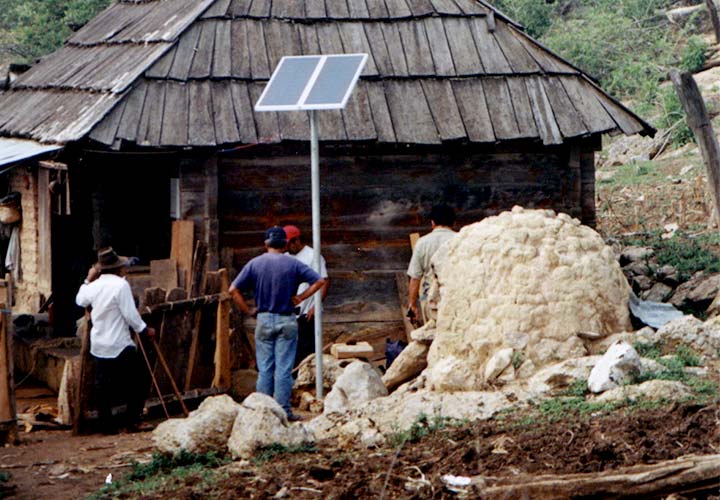REopt Supports Techno-Economic Modeling of Microgrids in Sub-Saharan Africa

A solar panel is used for power in a remote location. Photo from United Solar Ovonic.
NLR uses the REopt® platform to provide decision support for Power Africa’s Beyond the Grid Program, analyzing and optimizing microgrid designs for systems across sub-Saharan Africa. REopt is a critical tool for understanding the techno-economic trade-offs in the microgrid sector, which can lead to the development of more adaptable business models and promote universal energy access.
As a part of this partnership, NLR evaluated the key drivers and considerations policymakers face when deciding if and how to regulate microgrid electricity tariffs. NLR analyzed the benefits and drawbacks of uniform national tariffs versus cost-reflective tariffs that can vary from site to site. REopt was used to model representative microgrid systems across sub-Saharan Africa and calculate the resulting levelized cost of electricity (LCOE) to estimate the gap between current tariff regimes and tariffs that would allow developers to recover costs and attract further investment.
In nearly all cases, a hybrid microgrid configuration incorporating solar photovoltaics, batteries, and diesel proved to be the lowest-cost option when compared to diesel or renewable energy–only systems. However, the estimated LCOE is still on the order of $0.70 U.S. dollars/kilowatt-hour—well above the typical subsidized tariffs charged by many utilities. Ways to address this cost gap while balancing the needs of all stakeholders were evaluated, including extending subsidies for microgrids, allowing more lightly regulated cost-reflective tariffs, and other compromise approaches based on the size of each microgrid.
REopt has also been used to analyze how the inclusion of the productive use of energy (PUE), defined as electricity demand from small industry or businesses, can impact the overall financial viability of a microgrid. Due to the typically low energy usage of residential customers, PUEs can play a critical role in creating a more adaptable revenue model to serve rural communities.
REopt was used to model the operations of a maize mill in Tanzania to analyze the techno-economics of adding PUE to a rural microgrid. The results showed that—depending on the timing, magnitude, and seasonality of the agricultural processing load—the mill can increase or decrease overall microgrid LCOE by up to 14%, illustrating the complexities of PUE integration. Careful consideration of loads is needed to determine if and how the mill should be connected to a microgrid system and under what type of tariff. Furthermore, optimization is critical to ensure mill equipment is properly sized for different PUE applications.
Ongoing work with Power Africa is focused on understanding the costs and technical trade-offs between lead acid and lithium-ion batteries, taking into account battery conditioning requirements, degradation mechanisms, load types served, and other site-specific considerations. Because batteries often make up 20%–30% of the capital costs of a microgrid, better managing and understanding what drives that cost is important for system design and operational planning decisions.
Related Stories
NLR technical report: Tariff Considerations for Micro-Grids in Sub-Saharan Africa
NLR technical report: Productive Use of Energy in African Micro-Grids: Technical and Business Considerations
NLR dataset: Microgrid Load and LCOE Modeling Results
Sponsors
U.S. Agency for International Development
Key Partners
Power Africa Beyond the Grid
Energy 4 Impact
Contact
Share
Last Updated Dec. 7, 2025
